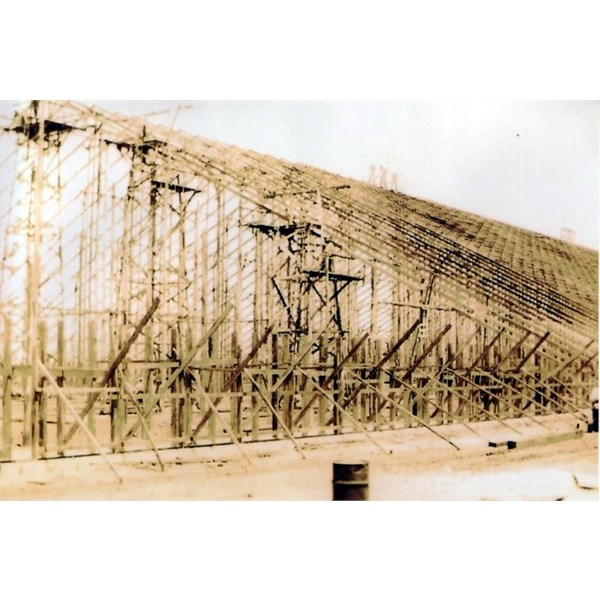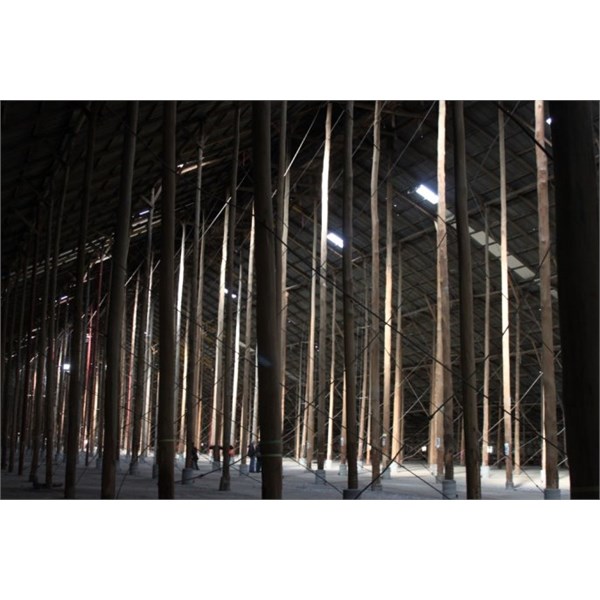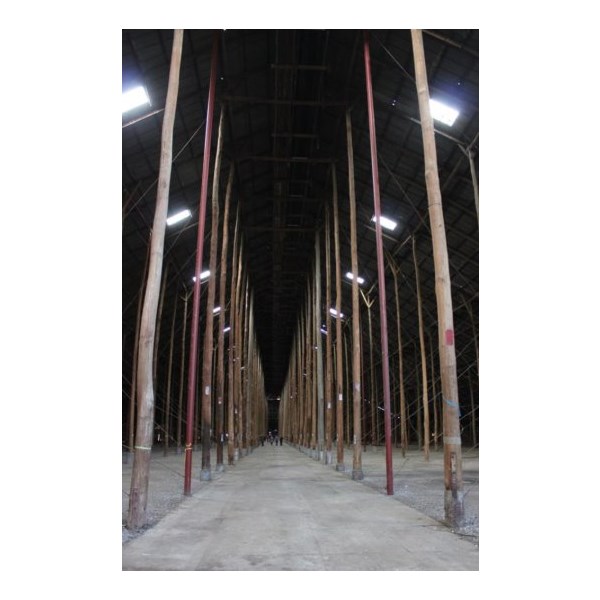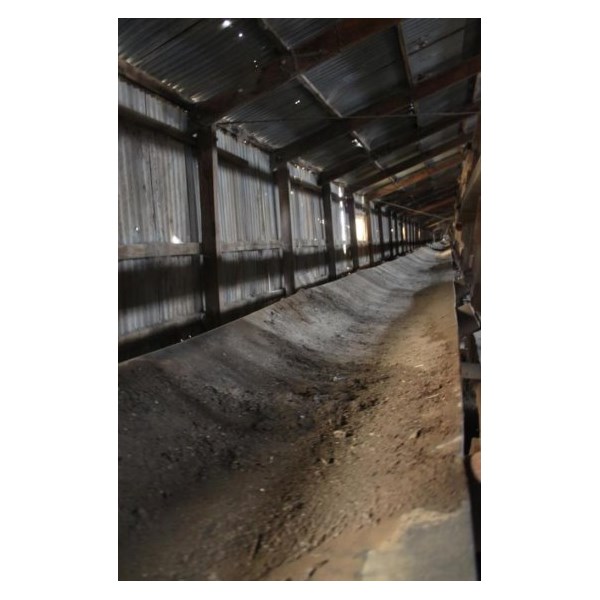In 1941, the outbreak of the Second World War and a worldwide glut of wheat necessitated the construction of large bulk grain stores in various parts of regional Victoria. The “Murtoa Stick Shed” was commissioned by the Grain Elevators Board, and Green Bros contractors undertook construction of what was officially known as Marmalake/Murtoa Grain Store No.1. An elevator at one end took wheat up to then ridge level where it was distributed by
conveyor along the length of the shed,creating a huge single mound of grain.
A shortage of steel meant that the shed was built largely from timber readily available at the time, most notably some 560 (56 rows of 10) bush-cut mountain ash poles erected straight into the ground. Some of the poles were 19-20 metres high. Concrete panels were then poured around the poles. The roof and walls of the Murtoa Stick are made of corrugated iron painted ferric red. Much of the building was done with little mechanical aid, and most of the workforce was away fighting overseas.

Constructing the Stick Shed

Stick shed 2011

Netting over the ferric red roof
The “Murtoa Stick Shed” demonstrates Australian ingenuity during a time of hardship, it was constructed over a period of only four or five months, commencing in September 1941.
Bulk deliveries of grain were distributed through
the Stick Shed via a system of mechanical elevators and conveyors, including a central
conveyor running high along the centre of the shed. Elevators transported wheat from delivery hoppers up to ridge level where it was distributed by
conveyor along the length of the shed, creating a huge single mound of grain. Braced internal timber bulkheads on either side of the shed took the lateral thrust of the wheat, and a
conveyor at ground level outside the south bulkhead took wheat back to the elevator for transport elsewhere. The roof angle was sloped to reflect the same angle a pile of wheat forms naturally. The shed is 280m long (the length of five Olympic swimming pools), 60m wide and 19m high at the ridge, and had capacity to store 95,000 tonnes (or 3.4 million bushels) of grain. Deliveries of bulk wheat commenced in January 1942, and by June of that year the grain store was at full capacity.
The Marmalake/Murtoa Grain Store is the earliest and only remaining of three large sheds of an unusually grand scale of the Australian rural vernacular corrugated-iron tradition built in Victoria during the early 1940s.
Use of the No.1 shed and the larger No.2 shed, erected in 1942/43, continued for many years. (Original plans also included a No.3 Shed at Murtoa, but this was never completed.) The No.2 shed was demolished in 1975. The No. 1 shed was also becoming increasingly expensive to maintain, and its use was phased out by 1989.
The 560 unmilled tree trunks supporting the roofing timbers and iron of
the Stick Shed might be viewed as a peculiar, symmetrically arranged “interior forest”. With its vast, gabled interior and long rows of poles the interior space has been likened to the nave of a cathedral.

Pole Inspections Oct 2012

Pole Replacements

The side conveyor
When
the Stick Shed ceased to be used for grain storage after 1989, plans were made for its demolition. However an Interim Preservation Order was served by Historic Buildings Council (HBC) in December 1989 and by December 1990 the shed had been added to the Historic Buildings Register. Debate continued over subsequent years, with frequent calls for the demolition of the building from some sources and persistent arguments for its preservation from others.
Ultimately, the
Heritage Council of Victoria undertook a large-scale program of work to stabilise and repair
the Stick Shed, including the repair of damaged poles and installation of galvanised wire “netting” to cover the entire roof area. Work is being undertaken to provide permanent public access to the Shed, separated from the activity of the surrounding grain receival complex. Application has also been made to have
the Stick Shed added to the Commonwealth
Heritage Register.
There will be a little surprise for next week...stay tuned.
.